
views
Method One: Solving Ethical Issues at Work as an Employee

Gather as much information as possible. Before taking action to solve an ethical issue, you need to have as thorough an understanding of that issue as possible. The problem may not be as straightforward as it first appears. Ask yourself if you really know enough information to determine what's going on. Ideally, you should gather all relevant facts concerning the issue at hand, but if you cannot collect all the facts, you at least need to know enough to make a well-educated hypothesis. You also need to ask yourself if you might be making assumptions. Everyone has their own personal and professional biases. Some of those biases are grounded in experience, but if you aren't careful, they could be skewing your perspective and making you see something that doesn't actually exist.
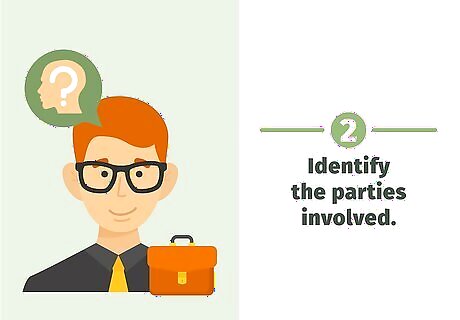
Identify the parties involved. Determine who else in the company is involved in this issue. Involvement can be direct or indirect. On a direct level, those participating in the ethical violation are certainly involved. On an indirect level, those who will be impacted regardless of having no say in the issue are also involved. Among others, this can include coworkers, customers, and stockholders. You'll also need to determine who, among those involved, will be your allies. Since fixing this issue goes beyond the limits of your power, you will need the support, assistance, and direction of others when solving it. That being the case, knowing who you can trust is a very important matter.
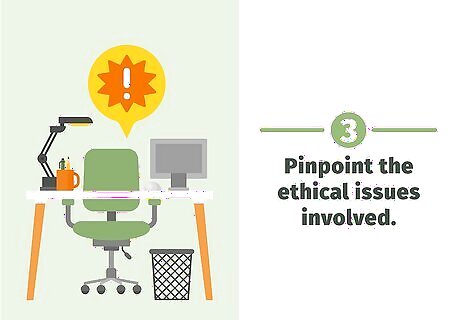
Pinpoint the ethical issues involved. Instead of settling for a general sense that something is wrong, you need to ask yourself which ethical principles are being abused. Some ethical violations are more obvious than others. For instance, if you caught a coworker stealing expensive equipment, you could make the clear distinction that theft is wrong. In situations dealing with small violations or interdepartmental strife, though, the violation may not be as clear. Review the circumstances again and ask yourself which fundamental principle is affected. Possible options include violations of power, integrity, honesty, objectivity, professional competence, confidentiality, or fairness.
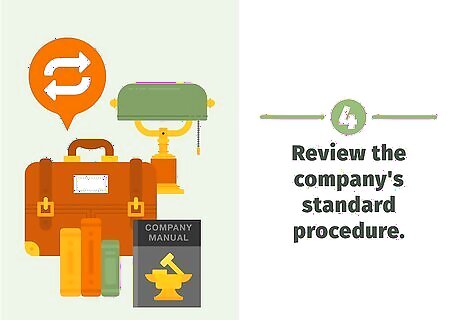
Review the company's standard procedure. Find out if your company currently has an internal system set up for dealing with ethical issues like this. If you have a company manual or similar documentation, review it now. Look into the organization's policies concerning workplace ethics. Pay close attention to the chain of command. Find out who you should involve at which points, and the correct procedure for doing so. If the company doesn't have a set structure for dealing with ethical issues, you will need to determine who to go to using your own experience and understanding.

List and evaluate your options. Think of every possible option available to you instead of settling for the most obvious. Write out each of these options and consider the impact each one might have. When evaluating your options, consider how each one fares in the light of your company's internal procedures, any external laws involved, and any general ethical values upheld by society as a whole. Predict the consequences that will result from each option. This includes both positive and negative outcomes. Understand that, in some circumstances, each option may come with both negative and positive consequences.

Execute the best option. After reviewing all of your options, determine which is best and put it into practice. In most cases, the solution will require you to escalate the issue to an authority within the company. The correct person may depend upon who within the company is guilty of the violation. Moreover, if the highest authorities in the company are guilty, you may need to bring the violation to the attention of an external authority. The best option should address the ethical issue in a productive manner. If multiple ethical values are involved, your solution should usually correct as many violations as possible. Whatever option you choose, be prepared to stand by it. There will always be critics, and there is no guarantee that you can remain anonymous throughout the entire corrective process.
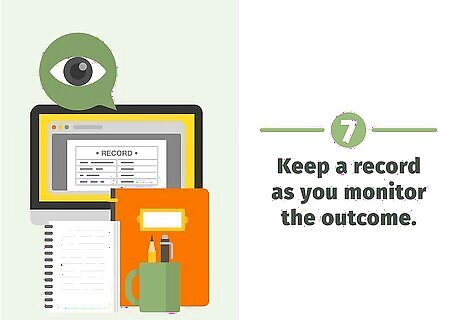
Keep a record as you monitor the outcome. Unfortunately, your work doesn't end just because you've reported the issue. Keep an eye on how things progress to make sure that the issue is genuinely addressed. As a general rule, it's a good idea to document nearly everything in writing. This includes your own investigations, the reports you've filed, and the discussions you've had concerning this issue. You may need to use these written records to defend yourself later.
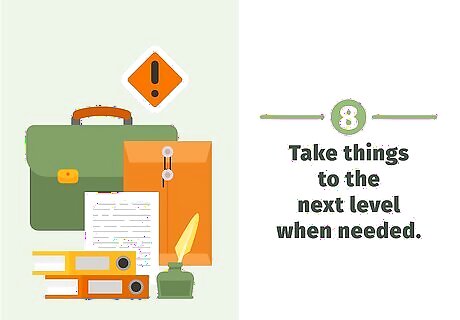
Take things to the next level when needed. If the initial solution you implement doesn't work, keep trying. Continue through the hierarchy until you've exhausted every possibility. Don't be afraid of going above someone's head if he or she isn't getting the job done. Be reasonable when evaluating how that supervisor has handled things, but don't let yourself be bullied into submission by someone trying to sweep things under the rug.
Method Two: Solving Ethical Issues at Work as an Employer or Supervisor
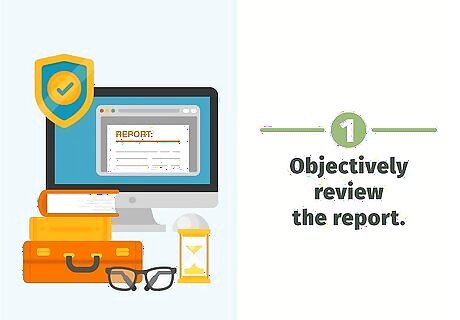
Objectively review the report. When an employee you supervise brings an ethical issue to your attention, you have the moral and professional obligation to hear what that employee has to say. If the employee explains the issue to you verbally, request a formal written report. The additional paperwork might seem like a pain, but it should help protect everyone involved, including both you and the whistle-blower. Do not allow your personal and professional relationships with the involved parties affect your judgment. You may think well of the person being reported and poorly of the person doing the reporting, and your instinct might be right when all is said and done. Until you straighten things out, though, you need to treat the complaint as potentially valid and act accordingly.
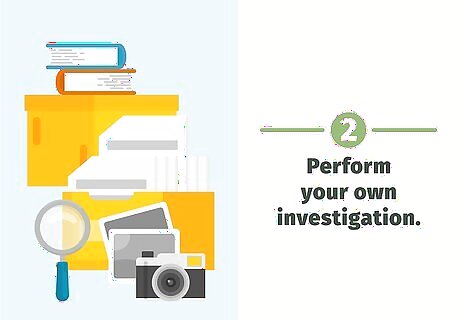
Perform your own investigation. After receiving the initial report, you need to collect all of the facts from scratch. Don't take anything for granted. Talk with other employees who might have information to share. Review written reports, computer records, and security footage associated that may shed light on the issue. If your company has a department dedicated to addressing matters like these, make sure that the department is informed. You'll need to work directly with that department during the investigation.
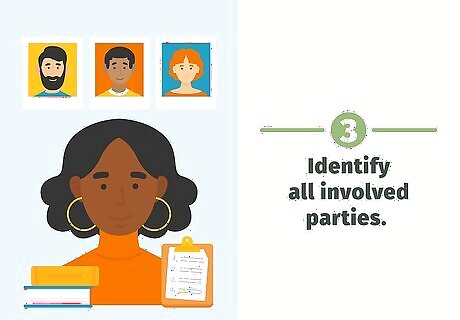
Identify all involved parties. Ask yourself which people are directly involved and which are indirectly affected. You will need to concern yourself with both groups when taking corrective action. From your perspective, the parties directly involved will include both the employee who reported the issue and the employee or employees mentioned in the report. Parties indirectly affected can include other employees, other supervisors, customers, stockholders, and more. Even though these persons have no control over the issue, you will still need to keep their needs and standpoint in mind.
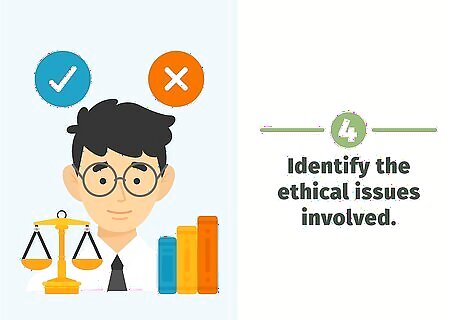
Identify the ethical issues involved. Draw a definite conclusion on which ethical principles have been violated. In some instances, there might be more than one principle involved. If your investigation proved the initial report true, you'll need to evaluate the actions of those reported. Possible ethical violations could include, among others, violations of power, respect, honesty, professional competence, or integrity. If your investigation proved the initial report false, you need to evaluate the actions of the reporter. Ask yourself if the report was made in honest error or if the reporter violated the ethics of honesty and respect by making false accusations.
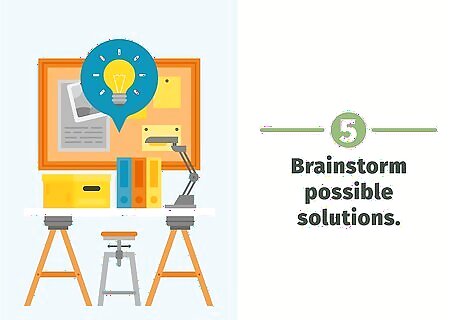
Brainstorm possible solutions. Think of different ways to solve the ethical violations committed. Keep in mind that solutions need to address both short-term and long-term needs. Evaluate your options based on how well they actually address the issue and how well they fit into any internal procedures already established by the company. Try to predict any consequences that will result from each of your options. Consequences can be good, bad, or a mixture of both. When choosing which option or options you'll implement, choose those that have the greatest positive consequences and least significant negative consequences.

Ask for external support. Depending on the overall nature of the issue, you might need to ask for support within the company or outside of the company. Support within the company can come from your own supervisor (when applicable), human resources, or other departments you work with closely. Support from outside the company can come in the form of ethics experts. Lawyers and legal authorities—like the police—may need to be contacted if the ethics violation was also illegal, but for less severe matters, an ethics expert might be a counselor or adviser.

Meet with the affected parties. Short-term solutions will usually require you to sit down with the parties directly involved. Depending on the circumstances, you may need to meet with each party separately or meet with them together in conference. When an ethics violation was reported in confidence by an external party, you will need to meet separately to protect the identify of the reporting party. If the violation itself involved multiple conflicting parties, you may need to sit down with all parties in conflict at the same time. Take appropriate disciplinary measures. Those who violated an ethical principle should be disciplined for it. Make sure that the consequence fits the severity of the violation, though. Offer counseling and support. If the incident caused trauma or other difficulties to one or more parties, find out from them what sort of support they need to heal.
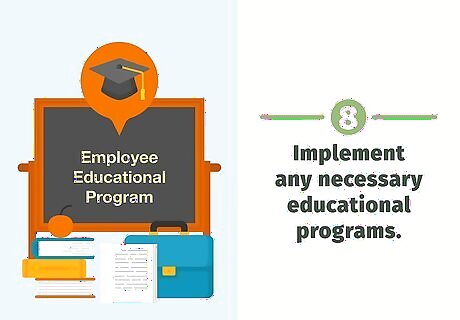
Implement any necessary educational programs. Oftentimes, ongoing ethical issues or those that affected a large group of people will result in the implementation of ethics training. The specifics will vary from situation to situation, but overall, you should aim to make sure that each current and new employee is aware of the ethical issue and how it should be handled.
Method Three: Solving Ethical Issues Involving Minors
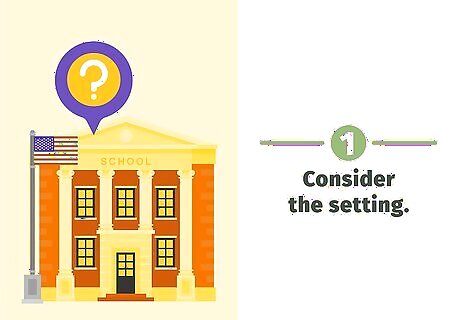
Consider the setting. Different settings might be governed by slightly different guidelines, even though the overall process will usually be fairly similar. Ethical issues involving minors often happen at school, but they can also occur within churches, community centers, or even just in the neighborhood. The role played by the minor may also determine how the ethical issue must be handled within the setting it occurs in.
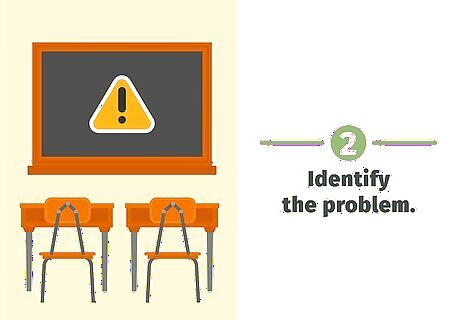
Identify the problem. Figure out what the problem is and what ethical issues it brings up. Try to define it on both an intellectual and emotional level. Ethical violations that also break laws or institutional regulations are usually easy to identify, but for issues that don't strictly violate such guidelines, you may need to think a little more deeply. If your only response is an emotional one, you might not be able to get the issue resolved. You need to be able to clearly and intellectually define why the issue violates some ethical principle (honesty, responsibility, respect, etc.).

Collect information. Gather as much data about the circumstances and applicable regulations as possible. Issues involving minors can be particularly sensitive, so you need to be remarkably thorough. Identify all parties involved. Try to find out exactly what happened, gathering as much evidence as you can in the process. Also gather data about applicable regulations from various governing sources, including professional organizations and government at the federal, state, and local level.
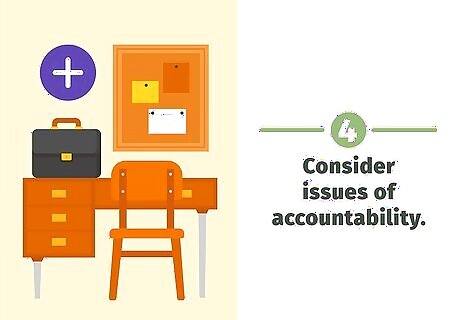
Consider issues of accountability. You'll need to determine how accountable the involved minors and adults are in this situation. Regarding minors, accountability needs to be assessed at both legal and personal levels. Involved minors might not be legally responsible for certain actions even though they are responsible for others. When no laws were violated, some minors may not be accountable for various aspects of the situation based on their age or level of development. Parents, guardians, teachers, and other adults in the minor's life may also be held accountable for some ethical violation committed by that child, especially if the adult in question had the ability to prevent or control the issue before it became a problem.
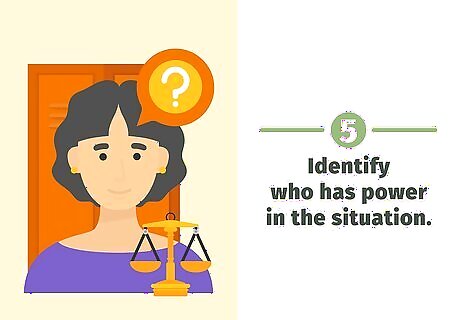
Identify who has power in the situation. You may not have the power to solve the issue alone, but someone does. Figure out who has power in these circumstances to help guide your next move. You'll need to keep in mind the minors' rights and the parents' rights. Even though their power may not be able to solve the issue, it is still a power that must be addressed and worked with. Typically, the power to solve the issue rests with multiple people, including some type of authority. Issues taking place at school might require the involvement of school officials. On the other hand, issues taking place in the neighborhood or in a minor's home might require help from police or social workers.
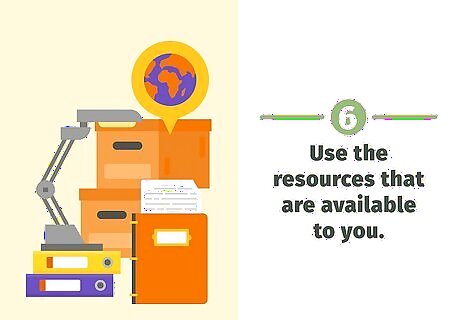
Use the resources that are available to you. Resources can include institutional hierarchies, other people, books, and more. You might turn to a supervisor or colleague and ask for advice on how to proceed based on his or her past experiences. That individual may also be able to provide you with additional information or clarification. Similarly, you can read articles or books that address the issue according to setting and severity. Doing so will give you greater access to information that is more useful to your specific set of circumstances.
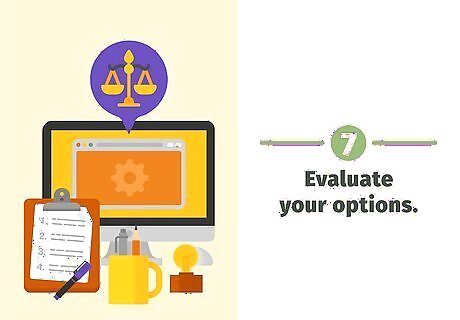
Evaluate your options. Make a list of all possible actions you can take, keeping in mind that inaction is also considered an action for these purposes. Write out the positive and negative consequences of each option. When reviewing your options and choosing the best one, make sure that the ethical issue is being actively addressed in the best way possible. You need to be able to defend your final decision on an ethical and legal basis.
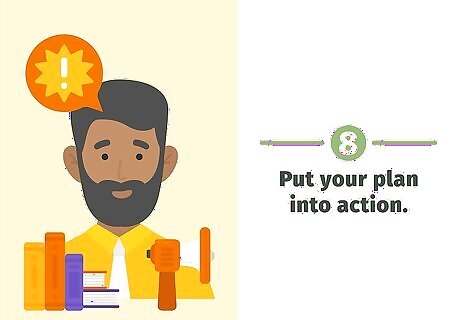
Put your plan into action. After deciding on a plan, carry it forward. Notify any authorities you need to notify and commit to any personal involvement you may need to accept. Even if the actual power to solve the issue rests outside of your hands, you should still follow up with the process as much as you are legally allowed to do. Make sure that things are being handled properly, and if they aren't, be prepared to elevate the issue to the next level.




















Comments
0 comment